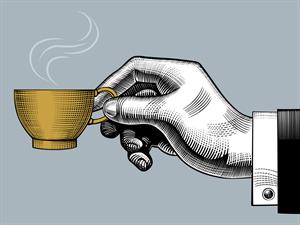
PUMPA - SMART LEARNING
எங்கள் ஆசிரியர்களுடன் 1-ஆன்-1 ஆலோசனை நேரத்தைப் பெறுங்கள். டாப்பர் ஆவதற்கு நாங்கள் பயிற்சி அளிப்போம்
Book Free DemoIn winter, you feel cold and shiver inside the house. Similarly, in summer, you feel hot and sweaty while walking on the road.
- How can we measure those?
- How do we identify whether an object is hot or cold?
- How do we find out how hot or cold an object is?
In this chapter, we shall try to find out the answers to some of these questions.
Heat:
Heat is one form of energy transferred between two objects, materials and systems with different temperatures, generally from a higher to a lower temperature. It is also known as heat energy or thermal energy.
Temperature:
Temperature is the physical quantity that expresses the hotness or coldness of the substance.
In our daily life, we frequently get confused between the terms heat and temperature. We hear the word temperature often in weather forecasts, but do we you think that, there is any difference between temperature and heat?
Yes! There is a slight difference between heat and temperature.
Parameters to be compared | Heat | Temperature |
Definition | It is defined as the flow of energy from the hotter to the cooler objects. | It is defined as the measurement of the hotness or coldness of a substance. |
Property | It flows from a hotter object to a cooler object. | Temperature of the object increases when we heat them. And, the temperature of the objects drops down when we cool them. |
Particle | It depends not only on the temperature of the substance but also on the amount of molecules that are there in the object. | It is related to how fast the atoms or molecules move or vibrate within the substance and also determines the direction of the heat flow. |
Measures | The total kinetic energy of the molecules in the substance. | The average kinetic energy of the molecules. |
SI Unit | Joule | Kelvin |
Unit | Joule, Calorie | Kelvin, Fahrenheit, Celsius |
Symbol | Q | T |
Measuring Instrument | Calorimeter | Thermometer |
Working ability | It does work. | It is used to measure the degree of heat. |
From this, it is clear that heat is the cause and its effect is temperature.
Hot object:
Whenever the object's temperature is higher than the human body temperature, it seems to be warm or hot, and it is called a hot object. When the object is said to be hot, its temperature is relatively high because atoms in those objects move very fast due to the high energy.
Whenever the object's temperature is higher than the human body temperature, it seems to be warm or hot, and it is called a hot object. When the object is said to be hot, its temperature is relatively high because atoms in those objects move very fast due to the high energy.
Example:
Sun, Fire, Coffee, Hot pans

Example for hot object - Cup of coffee
Cold object
Whenever the object's temperature is lower than the human body temperature, it seems to be cool or cold, and it is called a cold object. When the object is said to be cold, its temperature is relatively low because atoms in those objects move slowly due to the low energy.
Whenever the object's temperature is lower than the human body temperature, it seems to be cool or cold, and it is called a cold object. When the object is said to be cold, its temperature is relatively low because atoms in those objects move slowly due to the low energy.
Example:
Ice, Cool drinks, Air from an air conditioner

Example for cold object - Ice cubes